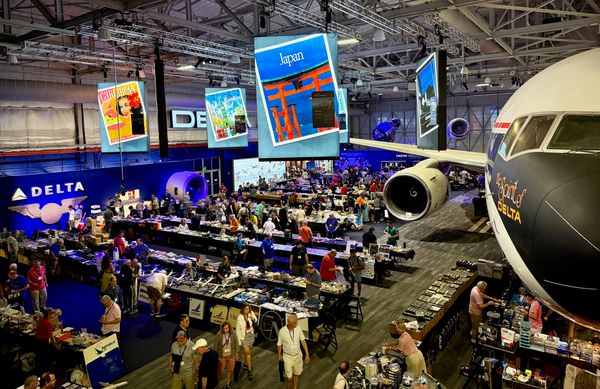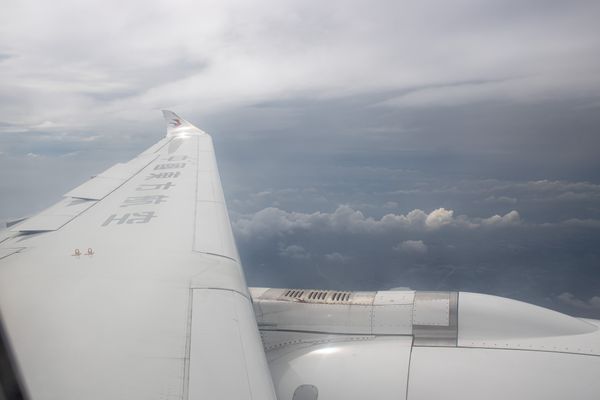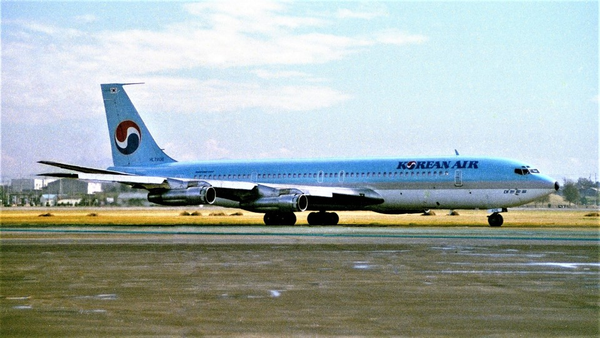For the past couple of years, you might have noticed that your trips are more expensive than usual. Indeed, you would not be wrong: airline ticket prices have ballooned in the post-COVID years due to a variety of factors that will be discussed as we go. The continued rise in airline ticket prices then raises the question: will they keep rising or will the inflation rate lower?
Background
Airline ticket price inflation is not a new phenomenon. Prices have generally risen year over year at gradual rates to reflect higher wages over time and greater purchasing power. Airline ticket prices, though, are subject to some of the most dynamic pricing models on the planet and change constantly as pricing teams at airlines seek to maximize revenue depending on what type of traveler is flying, what time of day it is, and what they believe their product will be valued on the market. When any of those factors change, so do the prices.
In March of 2020, the airline industry faced some of its toughest days in history when the COVID-19 pandemic hit globally. Travel demand plummeted to historic lows and supply chains throughout the airline industry became deeply disrupted as production ground to a halt.
These factors, in turn, brought fare prices down by nearly 25% from Q1 2020 to Q2 2020 across all origins in the U.S. Low demand meant airlines deeply discounted seats to create the largest incentives to travel in an unsafe environment. Lack of demand for oil due to the transportation sector broadly curtailing operations meant operational costs for airlines were much much lower, but it was still incredibly challenging for airlines to make money when there just weren’t people willing to fly regardless of how cheap fares were.

Then 2021 came, and the aviation industry saw some other significant changes. Passengers returned to the skies, and they returned in droves. Not only did passenger growth return far sooner than expected, but the luxury that they were willing to pay for was unheard of. Airlines took note and raised prices in return. More simply, passengers who hadn’t traveled in over a year were desperate to get back in the sky, and the pent-up savings led to a massive increase in premium product demand. The airlines, in turn, were happy to set fares at higher rates knowing people would pay, and could also justify these increases on the heels of a supply chain crisis that led to skyrocketing fuel and labor costs.
Unfortunately, these conditions continued into 2022 leading to high ticket prices across the board. Airline prices in 2022 rose 43% year over year as airlines struggled to bring back grounded planes to satisfy the record levels of passenger demand.
Will the Trend Continue?
Fortunately for travelers, prices almost certainly won’t continue to rise at the rate in which they have over the past couple of years. The summer travel season is coming to a close, a travel season that saw some of the most expensive trans-Atlantic trips on record as airlines capitalized on exorbitant demand for both economy and business class tickets.
While airline CEOs, particularly Delta CEO Ed Bastian, continue to reiterate that travel demand remains "robust", bookings into next year are trending towards a more normal year. Moreover, as people spend their excess savings on expensive first class tickets, premium demand will continue to regress towards the mean in the coming months and years. Airlines are continually getting closer to running full schedules, allowing capacity to meet demand after three years of chaos where airlines couldn’t fly all the people that were hoping to fly. Consequently, airlines should be able to reach an equilibrium point where prices will fall to reflect the additional capacity.

Indeed, prices have, when looking broadly, been dropping over the last four months. While of course, this is not the case in all markets, prices have been coming down as airlines ramp up capacity. According to ThriftyTraveler, "average airfare fell another 8% from June into July 2023, the fourth consecutive month with a substantial drop".
How You Can Save On Flights
While airline ticket prices are more often than not fairly expensive on most routes, that is not always the case, and you don’t have to fly a low-cost airline to fly cheaply.
Full-service airlines like Delta, United, and American can often have deeply discounted fares, but you have to be savvy to find them. Most airlines sell their tickets in buckets, called fare classes, in which the fare you purchase actually implicates more than just where you are sitting on the plane. Within the economy class alone, most full-service airlines offer upwards of 10 separate fare classes. However, at the time of booking, usually, only 2 to 4 fare classes are available to book.
Airline revenue management teams typically release tickets in buckets of a certain fare class, meaning that the price you would pay for a generic "Main Cabin" Delta ticket, will be of a certain fare class that corresponds to any non-refundable Main Cabin ticket. Most of the time the fare will be in the middle or close to the higher end. However, for nearly all flights on an airline like Delta, the airline will release a bucket of tickets in the lowest fare class for a generic "Main Cabin" ticket, and these fares will be deeply discounted.

For most deeply discounted regular economy fares, there are restrictions, but not anywhere near what you would find in basic economy (which, technically, operates essentially as the most heavily discounted economy fare class). If you book a Delta V fare, for example, you still get all the perks of a "main cabin" ticket, including seat selection and the ability to check bags starting at $30 for the first bag, but, you may not have the option to purchase upgrades to higher classes if you do not have Medallion status with the airline. Moreover, the prices you see for paid upgrades on an airline like Delta change depending on the fare class that you purchase.
Some airlines, like United, actually let you see what fare classes are available on your flight when booking. The "Expert Mode" tool, loved by those looking for award redemptions for showing available award space on any flight, is a great way to see which fare class buckets are actually being used and available on any United flight.
The easiest way to get the best fares is to book as far in advance as you can. Flight prices won’t always be cheap if you book far in advance, but the cheapest fare buckets are almost always released at least 60 days prior to departure. Once within that window, it is incredibly rare to find the lowest possible prices as only more expensive fare buckets are usually sold.
Another incredibly important factor to consider now is that most airlines have fully eliminated change fees which provides far more flexibility for customers. Moreover, most airlines will allow you to change your flight for free - even if the new flight has a higher ticket value - if the original flight is modified by at least 30 minutes to an hour depending on the airline.
Given this, booking early is the way to go because even if prices do drop down the line, you have the ability to rebook your flight to the new price for no cost and can be refunded the ticket difference in e-credit or in cash if you specifically request it from the airline. More broadly, despite higher than normal ticket prices, the flexibility airlines provide these days makes it quite easy to save hundreds of dollars on tickets.
Impact on Frequent Flyer Status
The last point to mention regarding airline ticket prices is that you may have noticed massive changes to frequent flyer programs in the past couple of years. Delta, United, and American have all significantly changed the requirements to earn frequent flyer status, particularly in raising the spending thresholds for each status. This is not a coincidence.

Much higher ticket prices made it far easier to earn frequent flyer status, in turn devaluating the program, so airlines adjusted the requirements to bolster exclusivity. United, for example, now requires you to spend $4,000 at a minimum to earn Premier Silver status, and a whopping $18,000 to earn Premier 1k. Delta, to their credit, has kept the Silver Medallion number at $3,000 medallion qualifying dollars but has raised the threshold for the Gold Medallion tier to $8,000 medallion qualifying dollars from $6,000.
These changes might seem unfair, but with ticket prices being far higher than they were compared to 2019, to a degree they are necessary to isolate who flies and spends the most on an airline. The reality in 2023 is that frequent flyer status doesn’t reward those who fly the most but rather who spends the most and that will likely continue well into the future.
Bottom Line
Airline ticket prices are not set to rise indefinitely. As the summer travel season comes to a close, prices are becoming more affordable, and some airlines, like Southwest, continue to offer sales at varying times of the year with deeply slashed fares. As international and business travelers return to the skies, domestic fares especially should continue to come down as airlines boost their bottom line from high-spending executives traveling in business class overseas.
Fares will continue to fluctuate as always, but with the right tactics and understanding of how airline pricing works, saving on air travel has never been easier and more accessible to the public than it is right now.
No "Mate's Rates" in the Sky as Qantas Bans All Staff (Including CEO) From New A350 First Class » What You Don't Know About Airport Operations That Go Overnight » AeroXplorer Named Official Media Partner for Airliners International 2026 in Denver »
Comments (0)
Add Your Comment
SHARE
TAGS
INFORMATIONAL Prices Inflation Aviation Ticket Prices COVID-19 Frequent FlyerRECENTLY PUBLISHED
 AeroXplorer Named Official Media Partner for Airliners International 2026 in Denver
AeroXplorer is proud to announce its appointment as the Official Media Partner for Airliners International™ 2026 Denver. This partnership marks a significant collaboration between the world's largest airline collectibles show and one of the fastest-growing digital voices in the aviation industry.
NEWS
READ MORE »
AeroXplorer Named Official Media Partner for Airliners International 2026 in Denver
AeroXplorer is proud to announce its appointment as the Official Media Partner for Airliners International™ 2026 Denver. This partnership marks a significant collaboration between the world's largest airline collectibles show and one of the fastest-growing digital voices in the aviation industry.
NEWS
READ MORE »
 VIDEO: What It's Like Onboard China's COMAC C919
We flew onboard China Eastern's COMAC C919 to experience China's homegrown narrow-body up close. From seat comfort to cabin layout to noise levels to tech: how does it really compare with the Boeing 737 and Airbus A320? This review puts all three workhorses under the same spotlight.
TRIP REPORTS
READ MORE »
VIDEO: What It's Like Onboard China's COMAC C919
We flew onboard China Eastern's COMAC C919 to experience China's homegrown narrow-body up close. From seat comfort to cabin layout to noise levels to tech: how does it really compare with the Boeing 737 and Airbus A320? This review puts all three workhorses under the same spotlight.
TRIP REPORTS
READ MORE »
 KAL858: The North Korean Bombing that Shocked the World
Among the 99 passengers boarding Korean Air Flight 858 on November 29, 1987, few could imagine their journey would end as one of aviation's darkest mysteries.
STORIES
READ MORE »
KAL858: The North Korean Bombing that Shocked the World
Among the 99 passengers boarding Korean Air Flight 858 on November 29, 1987, few could imagine their journey would end as one of aviation's darkest mysteries.
STORIES
READ MORE »



